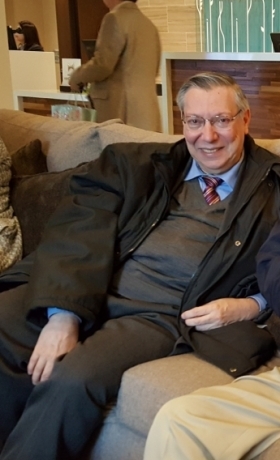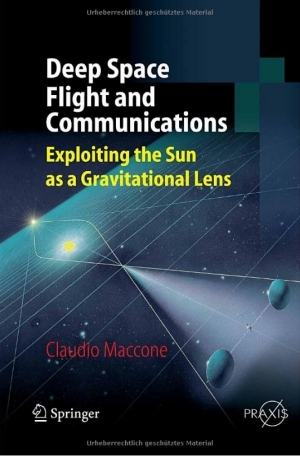Claudio Maccone: Upcoming Presentation on FOCAL
The Sun’s gravitational lens became something of an obsession of mine when I first learned about it in the 1990s. Although the physics of gravitational lensing became apparent in Einstein’s work, and was indeed studied by him, it would take several decades before Sydney Liebes at Stanford worked out the mathematics and showed how a galaxy between us and a more distant quasar could focus the light of the quasar in ways astronomers could observe.

The Stanford connection persisted in the work of Von Eshleman, who as far as I know was the first to delve into whether our own Sun could be used in much the same way. As astronomers explored the concept in the 1980s, Italian physicist Claudio Maccone went on to conceive of a mission that could exploit lensing. The Sun bends the light of an object directly behind it (in terms of the observer) in such ways that potential magnifications are huge. Could we put a spacecraft into range of the gravitational lens (beginning at 550 AU and extending outward), to achieve unprecedented magnification at various wavelengths of another stellar system?
Image: Claudio Maccone, in a photo I snapped at one of the Breakthrough Discuss meetings in Palo Alto.
There is much to be said about the idea, and I want to explore various aspects of it again in a few days, but this morning I simply want to direct your attention to Dr. Maccone’s upcoming online presentation, in a ‘webinar’ organized by Ravi Kumar Kopparapu (NASA GSFC) and Jacob Haqq Misra (Blue Marble Space Institute of Science).
I’ve looked at the presentation and see that it will range over all aspects of gravitational lensing that Dr. Maccone has addressed in his papers and books, including not only the implications for astronomy but also the potential for using lensing to boost communications from distant interstellar probes. Anyone interested in deep space astronomy and communications will find this a cutting-edge topic, and as you might expect, one that inspires controversy. The lensing effect is real. The key issue: Can we exploit it with near-term technologies?

The FOCAL mission that Dr. Maccone explores in his book Deep Space Flight and Communications: Exploiting the Sun as a Gravitational Lens (Springer Praxis, 2009) and subsequent papers is a deep dive into the hardware required to find the answer.
The seminar will take place on December 2 at 1100 US Eastern Time (1600 UTC) and is open to the public. The link I currently have for it is: https://us02web.zoom.us/j/6411016198
You can imagine why an effort like Breakthrough Starshot would find gravitational lensing as interesting as it does. If we could coax huge gain out of this natural lens, we could examine a star system like Alpha Centauri at close range long before sending a spacecraft there. And once deployed, even the tiny craft envisioned by Breakthrough Starshot would have the potential for returning data to Earth via a communications ‘bridge’ enabled by lensing. Other astronomical uses of gravitational lensing are, as you might imagine, numerous (I for one would like to know what a FOCAL mission might achieve in studying the Cosmic Microwave Background).
More on all this next week as I return from a small holiday.






Paul Gilster's Blog
- Paul Gilster's profile
- 7 followers



